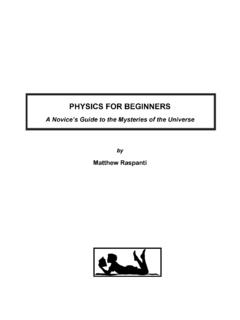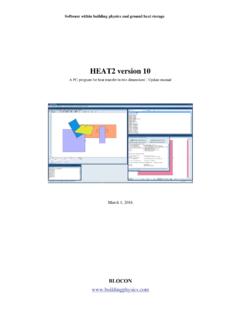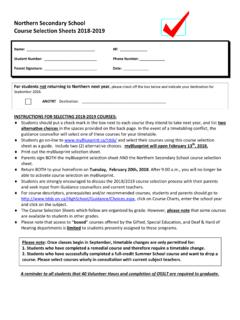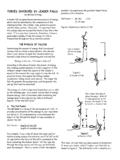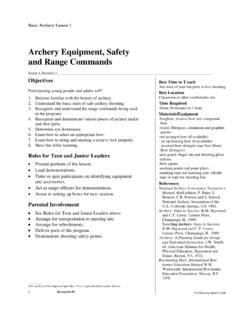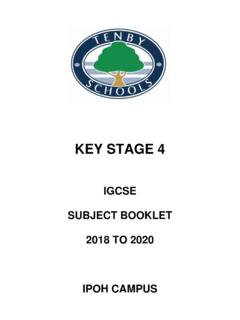Transcription of UNDERSTANDING & USING OPEN TUINGS A …
1 1 UNDERSTANDING & USING open TUINGS A Beginners Guide and Basic Manual GENERAL THEORY, BASICS, TECHNIQUES, CHORD CHARTS, SLIDE GUITAR AND 4 STRING INSTRUMENTS This book deals with open tunings in general - primarily open E, A, D & G. Thisinformation is also applicable to almost any open tuning. UNDERSTANDING these 4tunings should be of help in exploring & USING the endless combinations of openstring tunings on both 6 & 12 string guitars, slide guitar, dobro, banjo, violin, mandolin,uke, I have been playing in open tunings almost continuously for 35 years - since 1966when I saw Tom Rush at a little club out side of Fort Bragg, NC.
2 He played a dynamitesong that was about a train & he used a Telephone Jack on his little finger that slid upthe neck to make these groovy sounds. On his break I was able to talk with him & Iasked him how he did " open E" he said "you make an E chord by winding up the3 strings that you would fret to make the regular E chord". I went back to the barracks &tuned my guitar to open E and I have been playing only in open tunings since then. In1967 I heard some John Fahey records which solidified my fondness for open Fahey was a phenomenal guitar player & composer for guitar find & listen to theTakoma recordings Volumes 1 thru 6.
3 I taught myself how to play guitar in open E, A & D. I did this with no outside help &because of this I evolved my own way of keeping track of what each chord was relativeto the tuning I was in. For example, to me the chord "A" in open E was "up 5" becausefive frets up from the note E is the note A. This method of "keeping track" may end up tobe the ultimate teaching and learning tool for guitar & fretted instruments in method of keeping track will be a major part of what I am trying to teach with thisbook.
4 I used my own "numeric" method until I got into 5 string banjos & discovered thatthey were tuned to an open G chord. The strings had essentially the samerelationships as the open E tuning that I used - but 3 frets higher. I got the Earl ScruggsBanjo book - with ALL the chords & I then knew the NAMES of the chords (like A, Bm,C#, etc) that I knew as NUMBERS .like "up five". Earl also showed me minor, 7ths &augmented chords. open tunings can be used to play almost any style of music they simply offeranother way to tune the instruments string relationships.
5 open tunings are alreadyused in bluegrass 5-string banjo and dobro. I play bluegrass in the key of E by tuningto open E and putting a capo on the 3rd fret to produce open G. This offers a greatplatform for the basic boom chick bluegrass rhythm. open tuned fiddles andmandolins can also be found. Blues, rock and country are naturals for open tunings,Slide guitar and Hawaiian lap steel are also done in open tunings. Finger style guitaris also played in many open tunings. One of the Everly Brothers was playing his guitar2on open G to get the unique rhythm guitar style on Wake Up Little Susie.
6 Many of therecordings of John Fahey, both finger style and slide, were done in various opentunings. I highly recommend listening to his recordings Volume 1 thru 6 on theTacoma record label. They are monumental in the world of acoustic guitar and the useof open tunings. USING these tunings has been a great help to me in understandinghow the stringed instrument fret board works. With UNDERSTANDING comes increasedpotential for improvement. An interesting aspect of open tunings is that the open chord seems to createan environment to wander around in you play out of the open chord it isalways there as a firm base to go forth from and return to.
7 For solo slide guitar Iprefer the somewhat more organic sounding open A (or G). For lead slide workopen E (or D) adds needed range and it is a little more sterile . Dobro tuning isanother example of a characteristic sound that is directly related to the music. Ifound getting all chords to sound good in a standard tuning to be almostimpossible. When I went to open tunings I found that it was much easier to getall chords to sound good even E in open G and other somewhat dissonantchords. It will be possible to use & understand this book with little or no musical training.
8 Iwill actually stay away from most music theory and try to replace it with simple ways to keep track and understand chords, notes and the guitar fret board. I will add what Iknow about playing blues, bluegrass, slide and finger style guitar. USING open tuningswill also improve your UNDERSTANDING and playing in concert tuning. NOTHING in thisbook is meant to help you play like anyone else. EVERYTHING in this book is meant tohelp you play like 1 - THEORY & BASICSTHE GIST OF THIS BOOK The main thing to learn is that RELATIONSHIPS exist between various chords inmusic and between the notes that make up those chords.
9 Those relationships applydirectly to the scheme of the guitar neck & frets. UNDERSTANDING how notes & chordsare created on a guitar neck helps a lot in learning how to play. For example the chord"A" has the same relationship to the chord "E" as the chord "C" has to the chord "G" -The C/G chords are just 3 frets up the neck from the E/A chords. The UNDERSTANDING ofthese relationships will allow you to play with others in any key or to play in a key thatsuits your voice. The ability to "transpose" chords and notes from one key to anotherwill result.
10 UNDERSTANDING this rather simple system will also lead to learning bythinking about what should happen & then trying it - even the mistakes becomelearning experiences - its the thinking/ UNDERSTANDING that can be useful in PREJUDICE SIMPLIFIED MUSIC THEORY Music theory as it has been taught for the last 100 years or so is ok especially forlearning piano. I believe that it can get in the way of actually UNDERSTANDING the stringed3instrument fret board and the relationships of notes and chords to each other.
